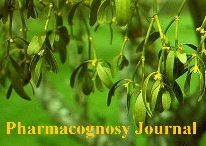Volume 3, Issue 7
Microbial production and optimization of media for organophosphate hydrolase
Author: Neelam Verma, Jyoti Saini, Sonia Virk and Mandeep Kataria
Abstract: Today, as use of neurotoxic Organophosphorus compounds are increasing, there is a great need that these compounds should be degraded through bioremediation. World Health organization recommended that Methyl parathion (C8H10NO5PS) is an extremely hazardous organophosphorus pesticide which is successfully degraded by Organophosphorus hydrolase. In the present study, microbial production of organophosphorus hydrolase was carried out from an isolate from soil. Modification of culture conditions effect Organophosphorus hydrolase production. The yield of Organophosphorus hydrolase activity was improved to three fold after medium optimization in comparison to before optimized conditions. Maximum growth of the isolate was observed after 42 hours of incubation the basis of A600. Sucrose (2.5%) and yeast extract (1.5%) were the optimal carbon and nitrogen sources, respectively.

Fig: (a) Yellow color colonies of isolate on agar plate having Wakimoto media. (b) Gram staining of the isolate showing violet colored rod shaped cells
Download Full Article: Click Here
Support Us
If you are interested in supporting our work and would like to contribute, you are welcome to mail me at jpbr.anil@gmail.com or at info@thepharmajournal.com it will be a great help and will surely be appreciated.

